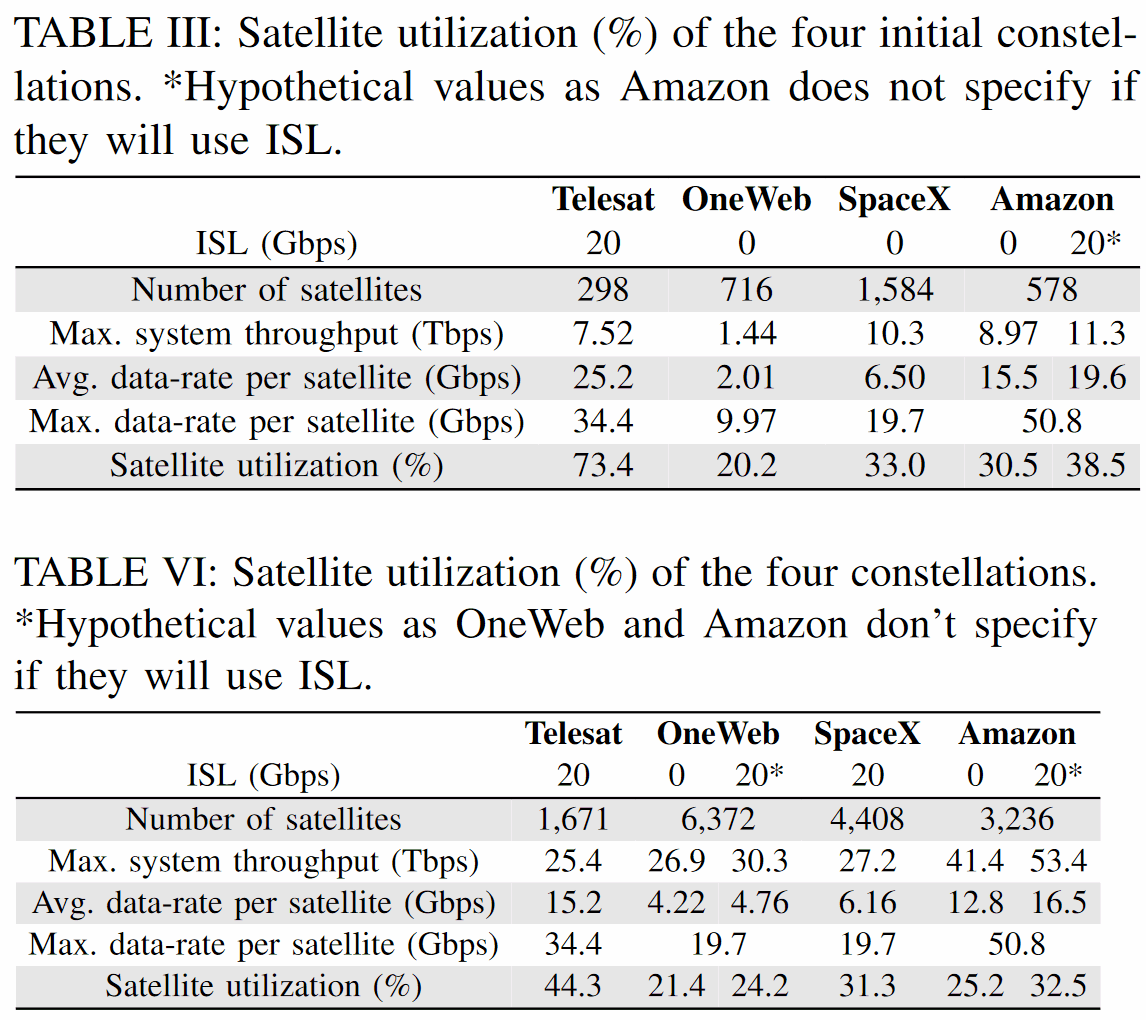Study Examines Capabilities of LEO Satellite Broadband Networks

Researchers at MIT’s Department of Aeronautics and Astronautics have tried to compare the estimated global data capacity of the four largest Low Earth Orbit (LEO) based ultrafast broadband satellite constellations – SpaceX (Starlink), Telesat, OneWeb, and Amazon (Kuiper). Interestingly, they end up closer than you might think.
We should point out that each network is at a different stage of development (e.g. Telesat and Amazon are still a fair way from commercial service) and the technologies they use, as well as the ground stations, are constantly evolving and expanding. As a result, the MIT study should be seen more as a ‘current’ estimate of each network’s expected throughput, or global data capacity, based on their technical specifications as reported to the FCC.
Likewise, the research doesn’t really consider the commercial model for each network, as well as how network throughput may vary between countries or how much network contention may be applied per user. As such, the report is only able to give a very general global overview of capacity, which is interesting if perhaps not as relevant for understanding future service impacts for consumers in specific countries.
Advertisement
In addition, the results vary quite a bit depending upon whether the constellations support key features, such as Intra- and Cross-Planeinter-Satellite Links (ISL). For example, Starlink has inter-satellite laser links on their latest LEOs, but OneWeb and some others don’t, although OneWeb say they might be added to future spacecraft. Such links can help with performance and reliability.
The study also looks at the initial deployment of each network, as well as the (completed) deployments in the next few years. As you might expect, SpaceX’s Starlink network has a big lead over OneWeb for their initial deployment, but this gap changes for the completed deployment. We consider Telesat and Amazon to be less relevant for comparison, as they’re still some distance from going commercial.

Despite having the fewest satellites, Telesat achieves a similar throughput as SpaceX thanks to their dual gateway connection and wider field of regard. OneWeb manages to achieve second-to-highest throughput thanks to their largest constellation, despite having the lowest satellite utilization.
Advertisement
The reduction in minimum elevation angle and altitude improves SpaceX’s previous results in both total throughput and satellite utilization. Amazon achieves the highest throughput at around 53.4Tbps (Terabits per second), at the cost of a larger ground segment. Finally, all architectures benefit from the usage of ISL, achieving improvements between 13% and 42% when using 20Gbps (Gigabits per second) connections.
Just for some comparison to those max throughput figures. The UK’s largest fixed line broadband ISP, BT, has seen daily traffic peak to around 20Tbps, while TalkTalk is more in the 7-8Tbps range.
MIT Study Summary by Network
Finally, we presented the four systems’ results in terms of total throughput and the number of gateway antennas in scenarios with and without ISL, and analyzed the satellites utilization. The main conclusions of this work can be summa-rized as follows:
• While Telesat’s initial constellation improves the satellite utilization up to 73%, their final deployment worsens previous results due to the diminishing returns of using a larger network. The dual gateway communication system doubles the maximum effective capacity of their satellites, leading to throughputs comparable to SpaceX, despite having less satellites.
• OneWeb’s initial constellation achieves the lowest throughput due to three factors: the user link bottleneck, not using ISL, and not using the dual gateway connection technology. However, in their final design, they compen-sate these factors by using a significantly larger number of satellites, achieving higher throughput than Telesat and SpaceX, at the cost of a larger ground segment.
• The reduction in minimum elevation angle allows SpaceX to offer better coverage, increasing their satellite utiliza-tion by 10% in their final deployment. Compared to previous results, they also manage to increase the total system throughput by 3.5 Tbps in the final design.
• Amazon’s system throughput is the highest of the four systems considered. However, they accomplish this with a ground segment of around 4,000 gateways, due to the dual gateway connection of each satellite.
• Both OneWeb and Amazon experience lower throughput from not using ISL. By using 20 Gbps connections, they could achieve between 13% and 25% increase in total system throughput without any additional changes in satellites or ground segment.
From the estimations presented in this work, all constellations could offer a total capacity around tens of Tbps. With this magnitude of data-rates, they would not be able to compete with the current terrestrial networks, which move around thousands of Tbps [26], but could complement the coverage of the land infrastructure in regions where a cable connection is ineffective, inappropriate, or just unfeasible (e.g., rural areas, isolated coastal and insular regions, and aerial and maritime mobile users).
We should point out that both SpaceX and OneWeb have targetted their network at precisely those poorly served areas, as mentioned in the last paragraph. Neither operator has promoted their service as being a solution or urban locations.
Mark is a professional technology writer, IT consultant and computer engineer from Dorset (England), he also founded ISPreview in 1999 and enjoys analysing the latest telecoms and broadband developments. Find me on X (Twitter), Mastodon, Facebook, BlueSky, Threads.net and Linkedin.
« Vodafone UK Pilot 5G Standalone in London, Manchester and Cardiff
Court Hearing Begins in BT UK Landline Overcharging Case »























































[admin note: Post removed – please try to stay on topic and don’t troll]
No mention of predicted latency?